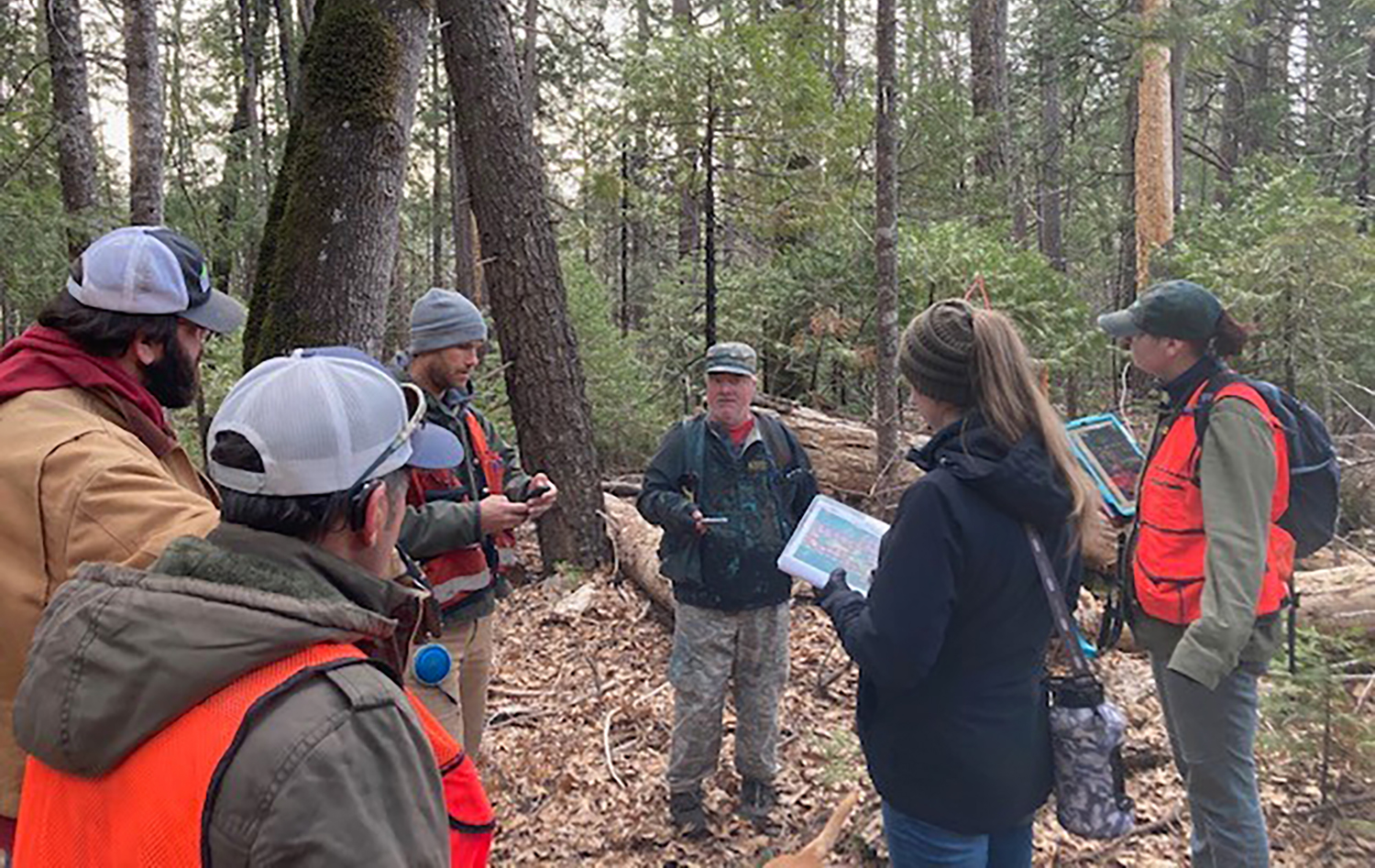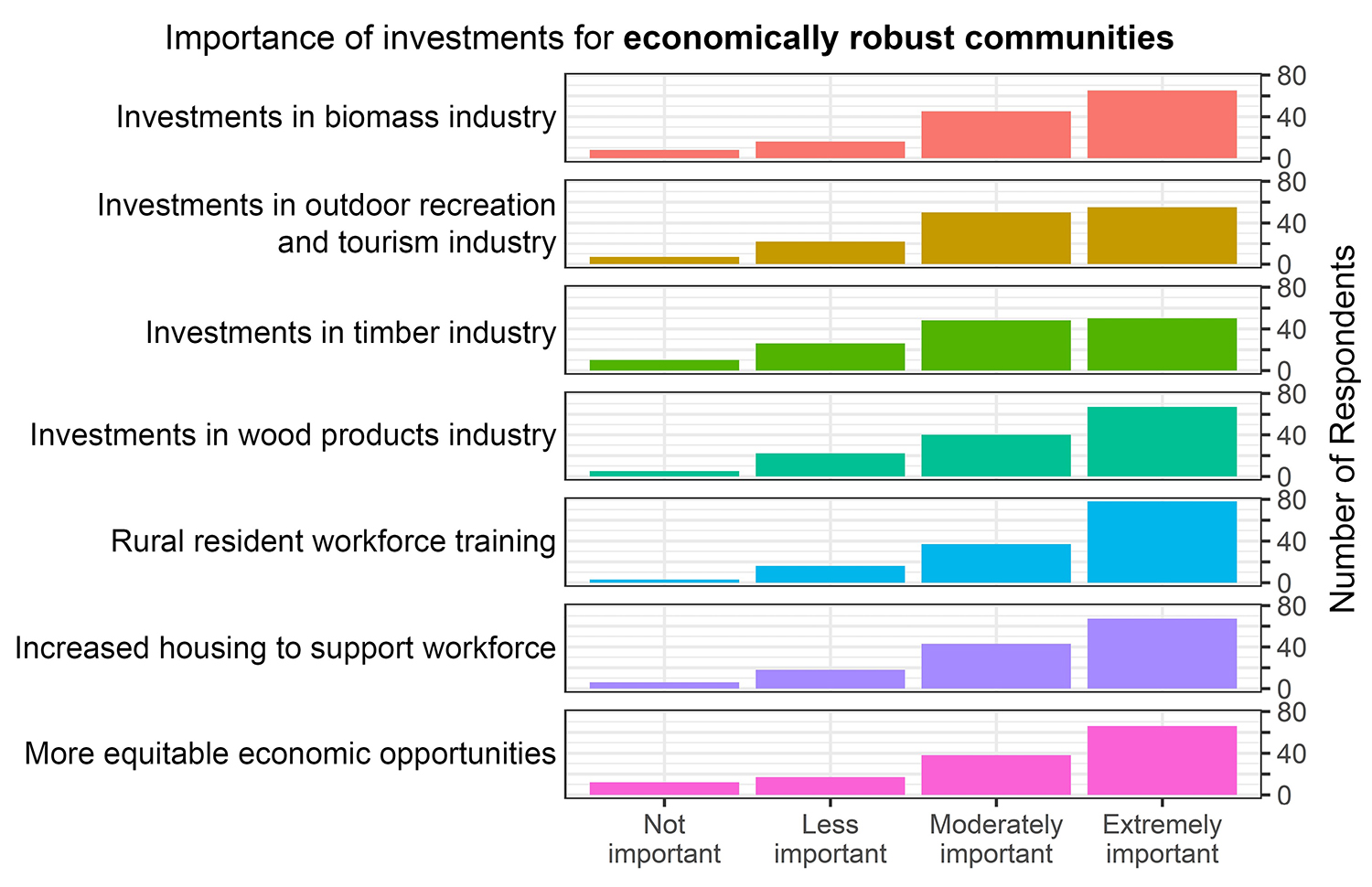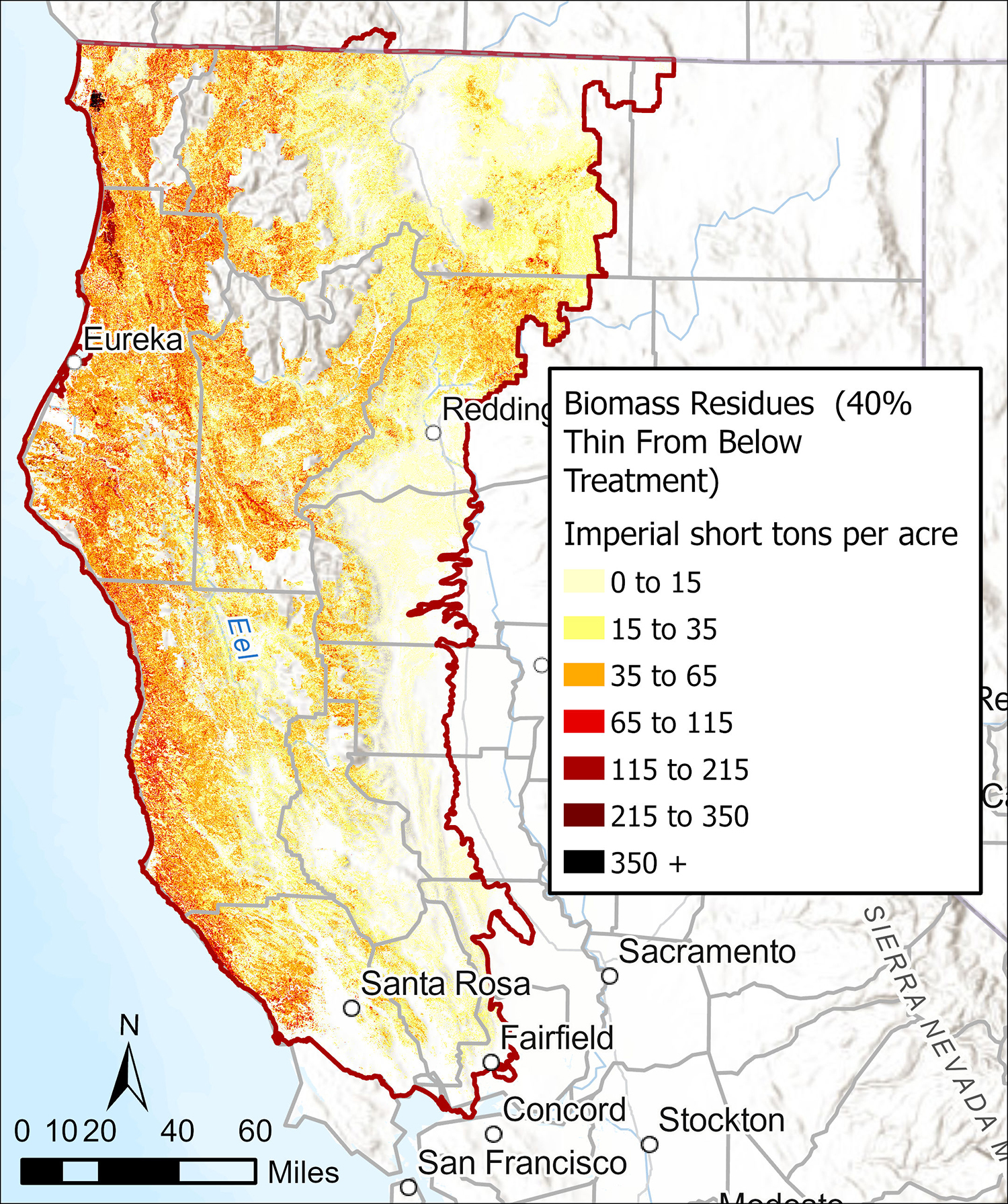Northern California Regional Profile
Economically-Robust Communities

Photo credit: Sarah Seiler, Western Shasta RCD
Overview
Wildfire directly and indirectly impacts the economic health of the Northern California region. Fire threatens valuable resources like agricultural crops, livestock, and timber. Smoke taints wine grapes and disrupts tourism. In areas where large landscapes have burned at high-severity, such as the Mendocino National Forest, recreation has declined, making it challenging to get outside tourist attention to support rebuilding. Wildfires in Northern California have shut down segments of Interstate 5 on several recent occasions, disrupting statewide commerce. The destruction of homes and entire communities has also put further pressure on limited housing resources and led to the loss of fire insurance for numerous homeowners and ranchers.
Despite these significant challenges, there is the potential to respond to the wildfire crisis in ways that create new jobs and economic opportunities for communities across the region. Some approaches to increasing regional resilience to wildfire involve tapping into and reimagining traditional industries. The North Coast timber industry has already learned to adapt to changing regulations and public values as it has evolved from plantation management approaches of producing lumber to incorporating silvicultural techniques that promote other ecosystem services, such as biodiversity conservation, carbon sequestration, and watershed health. This workforce is increasingly being contracted to do wildfire resilience-related forest management work, and the technical knowledge of this industry is now being applied to reduce fire hazard and promote post-fire recovery of forests.
There is also a lot of interest across the region in building new biomass plants, sawmills and other wood processing facilities, as well as renovating old facilities that closed 10-20 years ago, in order to develop localized solutions for dealing with biomass from fuels reduction treatments. Stakeholders believe that this could provide additional economic development opportunities for rural communities. However, many interviewees were pessimistic of these solutions being realized due to myriad challenges which included public opposition to having biomass plants in their local communities due to air pollution concerns, regulatory challenges, opposition from California’s Public Utilities Commission, need for more technological innovation around biomass energy, and need for government subsidies or significant private sector investments to develop this infrastructure and market.
Increased state and federal funding for land management work can help build rural economies by providing additional high-quality jobs in both public and private sectors. However, one challenge that Northern California is experiencing is that capacity to do land management work is unevenly distributed across the region. Areas that retained a timber industry tend to have more technical expertise and resources. In other areas, a lack of existing skilled workforce, as well as a shortage of housing for new workers, has limited capacity to get land management work done even when funding is available. Recruiting and retaining workers can be especially challenging for remote areas. Also, many recently-opened jobs have depended on grants or other temporary funding sources and are not permanent positions.
One significant change that is occurring is that new players are entering into land management work as a result of new challenges and opportunities, and they are contributing additional capacity and expertise. For example, both public and private organizations are staffing new fire ecologist and fire advisor positions. Local governments and water agencies are taking a new interest in forest management to increase the safety of the communities that they serve. Additionally, many organizations throughout the region, such as Resource Conservation Districts and non-governmental organizations, are developing new workforce training programs, some of which specifically engage Tribes and other communities that were historically excluded or underrepresented in the natural resource management field. Academic institutions, such as Shasta Community College, are also developing forest management career programs intended to fill critical workforce gaps and prepare new professionals for success in a changing industry.
Stakeholder Perspectives

Rural resident workforce training was the potential area of investment that survey respondents felt was most important for investing in economically robust communities. Increasing housing to support the workforce, and investing in both the wood products industry and biomass industry were also considered to be important potential areas of investment. All potential areas of investment were considered on average to be at least moderately important, though investing in the timber industry was considered less important relative to other options.
Resource Conditions


Biomass Residues (40% Thin from Below Treatment) (top) measures the amount of biomass that would be left behind on the landscape after removing 40% of the basal area by thinning small-diameter trees. This information can help managers assess the viability and trade-offs of removing biomass from the forest for utilization versus leaving it in place or pile burning. Low Income Population (bottom) can be used to identify where communities in the Northern California region might be socioeconomically disadvantaged. Households burdened by poverty are more likely to experience negative impacts from air pollution and other public health threats and may have less capacity to mitigate wildfire hazard or recover from disaster.
